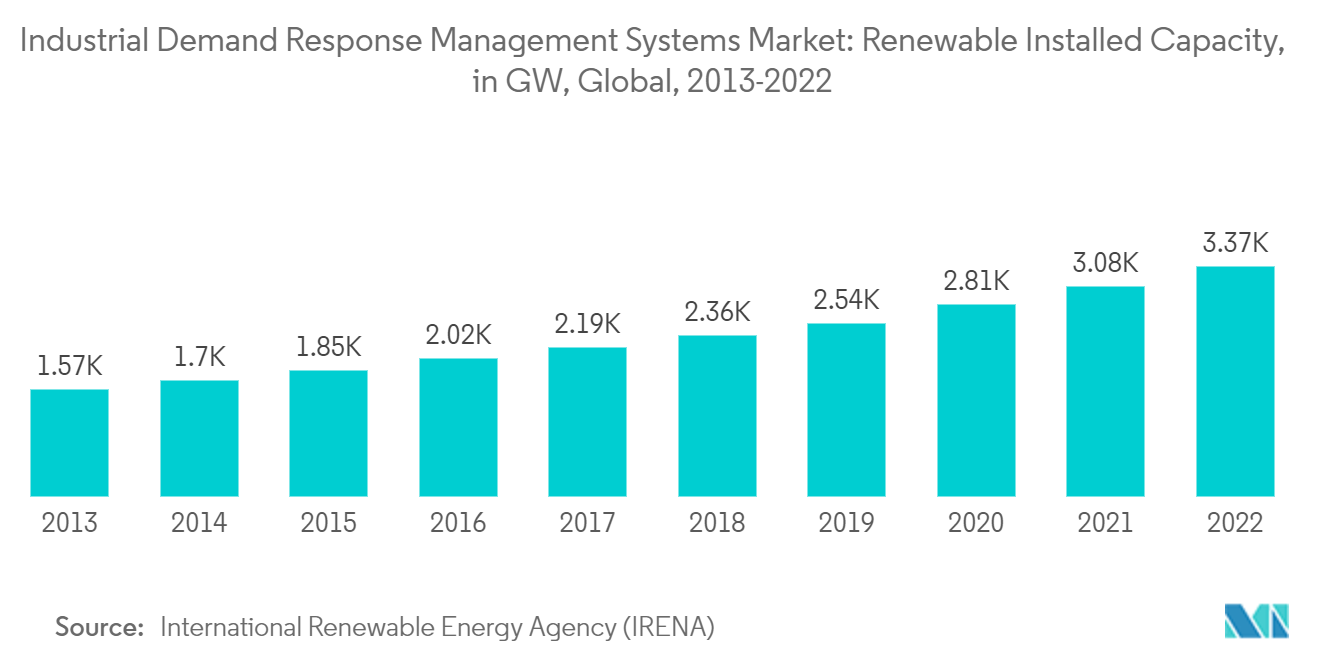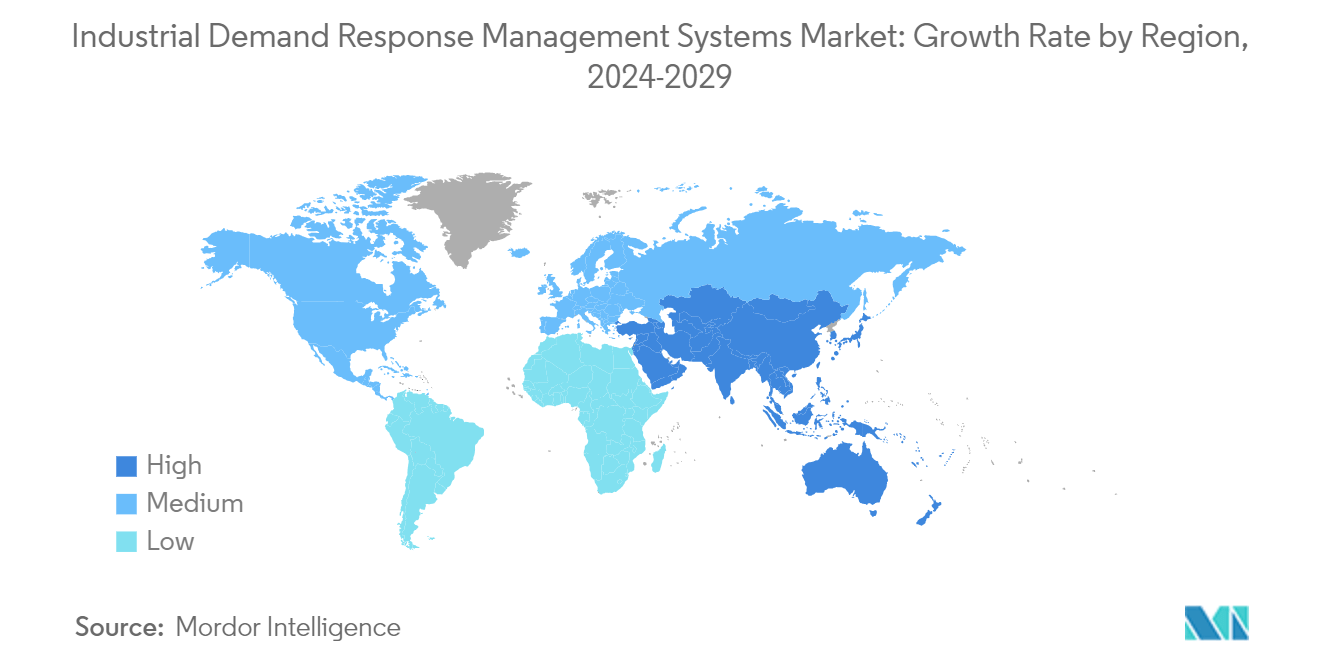Market Trends of Industrial Demand Response Management Systems Industry
Growing Penetration of Renewable Energy Sources to Drive the Market
- One of the key drivers behind the rising demand for the industrial demand response management system is the increasing penetration of renewable energy sources into the power grid. Over the past decade, the global power sector has been actively transitioning towards cleaner energy generation, focusing significantly on wind, solar, and hydroelectric power.
- According to the International Renewable Energy Agency (IRENA), the global renewable energy installed capacity reached more than 3,371 GW in 2022, a nearly 10% rise from over 3,077 GW in 2021. The increasing adoption of renewable energy is anticipated to drive the demand for industrial demand response management systems.
- Several of the biggest economies are expected to boost renewable energy use supported by massive initiatives. These initiatives are expected to make notable progress in advancing renewables, which in turn will drive smart grids.
- The European Union (EU) accelerated the deployment of solar and wind power in response to the energy crisis, with over 50 GW added in 2022, an almost 45% surge compared to 2021. Additionally, the new policies and targets proposed in the REPowerEU and the Green Deal Industrial Plan are expected to continue significantly boosting renewable energy investments in the countries, creating a significant market for industrial demand response management systems.
- The United States Energy Information Administration (EIA) projected that wind energy's share of the United States electricity generation mix would rise from around 11% to 12% from 2022 to 2023. Further, solar energy was expected to grow from 4% to 5% from 2022 to 2023. Such ambitious targets are anticipated to provide significant opportunities for the industrial demand response management system market during the forecast period.
- With the rapid integration of renewables and distributed technologies onto the grid, companies are increasingly upgrading their existing systems to address the challenges of maintaining power quality, balancing supply and demand in real-time, and ensuring adequate distribution infrastructure capacity. These advancements are expected to accelerate the growth and deployment of industrial demand response management systems.

Asia-Pacific to Witness a Significant Growth
- The market for industrial demand response management systems in the Asia-Pacific region is expected to witness significant growth during the forecast period.
- China is making increasing efforts to implement demand-side management (DSM) programs as a means of reducing peak electricity demand and matching renewable energy with demand. According to the International Energy Agency (IEA), China had about three million barrels per day (bpd) of new refining capacity at the start of 2023. It expects that China's new capacity will increase to 3.2 million bpd by 2028 as further refining units are added at a more rapid rate than throughput volumes.
- Besides, as per IEA, during the 2022-28 period, China will likely add 1.5 million bpd of new refining capacity, taking nameplate capacity to 19.7 million bpd. Still, processing volumes are expected to rise to 16.5 million bpd over the forecast period. Additionally, expansion and upgradation operations are ongoing at multiple Chinese refineries. The addition or expansion of new refining capacity is expected to increase the demand for DRMS in the coming years.
- A demand response (DR) system whose ability to adjust load owing to the grid requirements is not an entirely new concept in the Indian regulatory ecosystem. The DR method enables the adjustment of demand, which in turn allows customers to participate in the response to changing grid conditions. The implementation of DR, a proven demand management tool, will assist electricity distribution companies in India in managing their increasing electricity consumption over the coming years and operating more reliably in a greener grid.
- In February 2023, AutoGrid, a provider of virtual power plants and distributed energy management systems (DERMS), announced a collaborative initiative with Tata Power, one of India's largest integrated power companies. In addition to supporting India's clean energy transition, this pioneering program will help address peak demand in residential, commercial, and industrial areas.
- By the summer of 2025, Tata Power plans to roll out a new Demand Response Management Program to serve its customers in Mumbai, India's largest city. The program will involve 6,000 large commercial and industrial customers to attain 75 MW of peak capacity decrease within the first six months and then continue to rise to 200 MW.
- Considering the development of the industrial sector in the region and the adoption of demand response programs, the region is expected to witness a massive demand for DRMS in the future.


